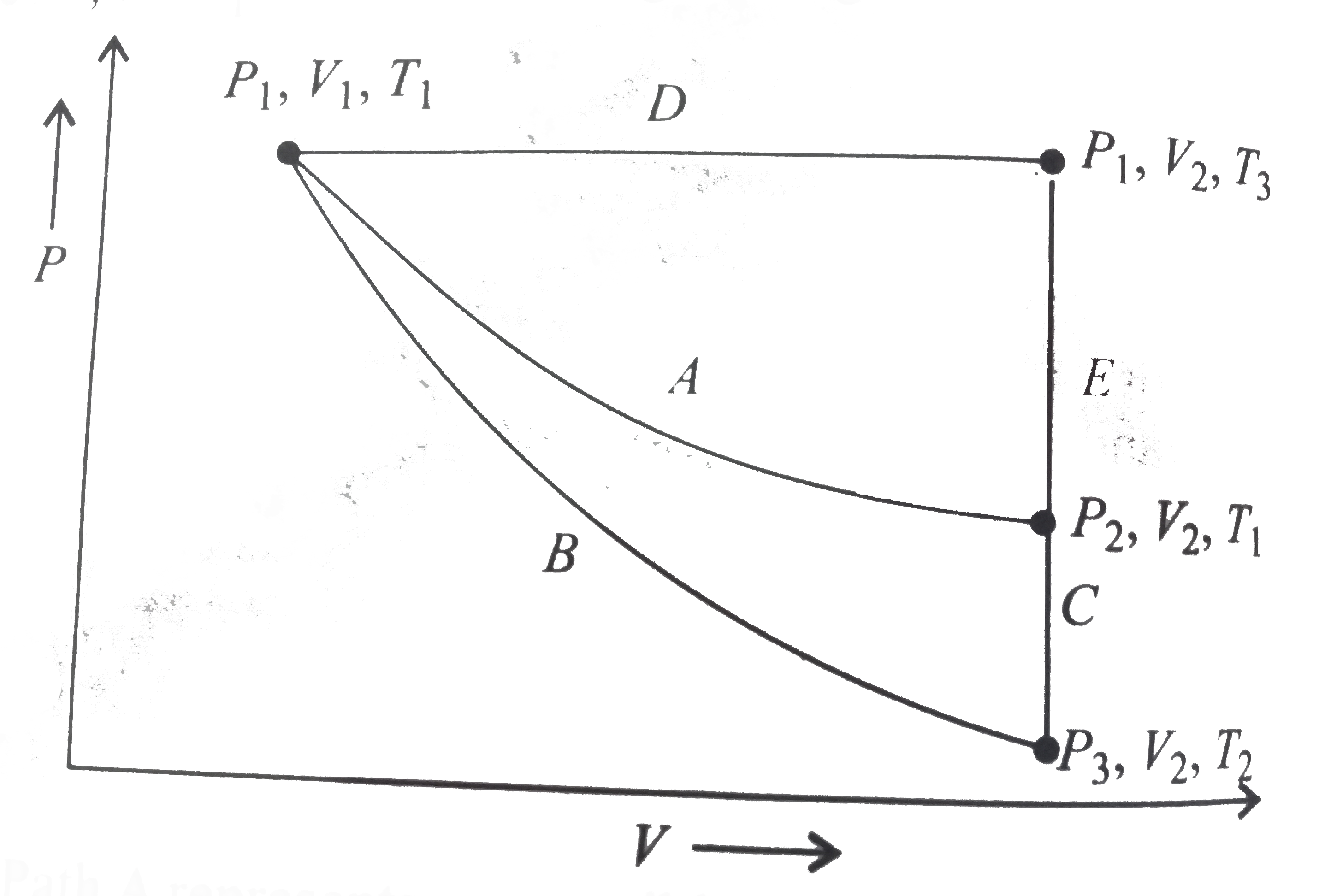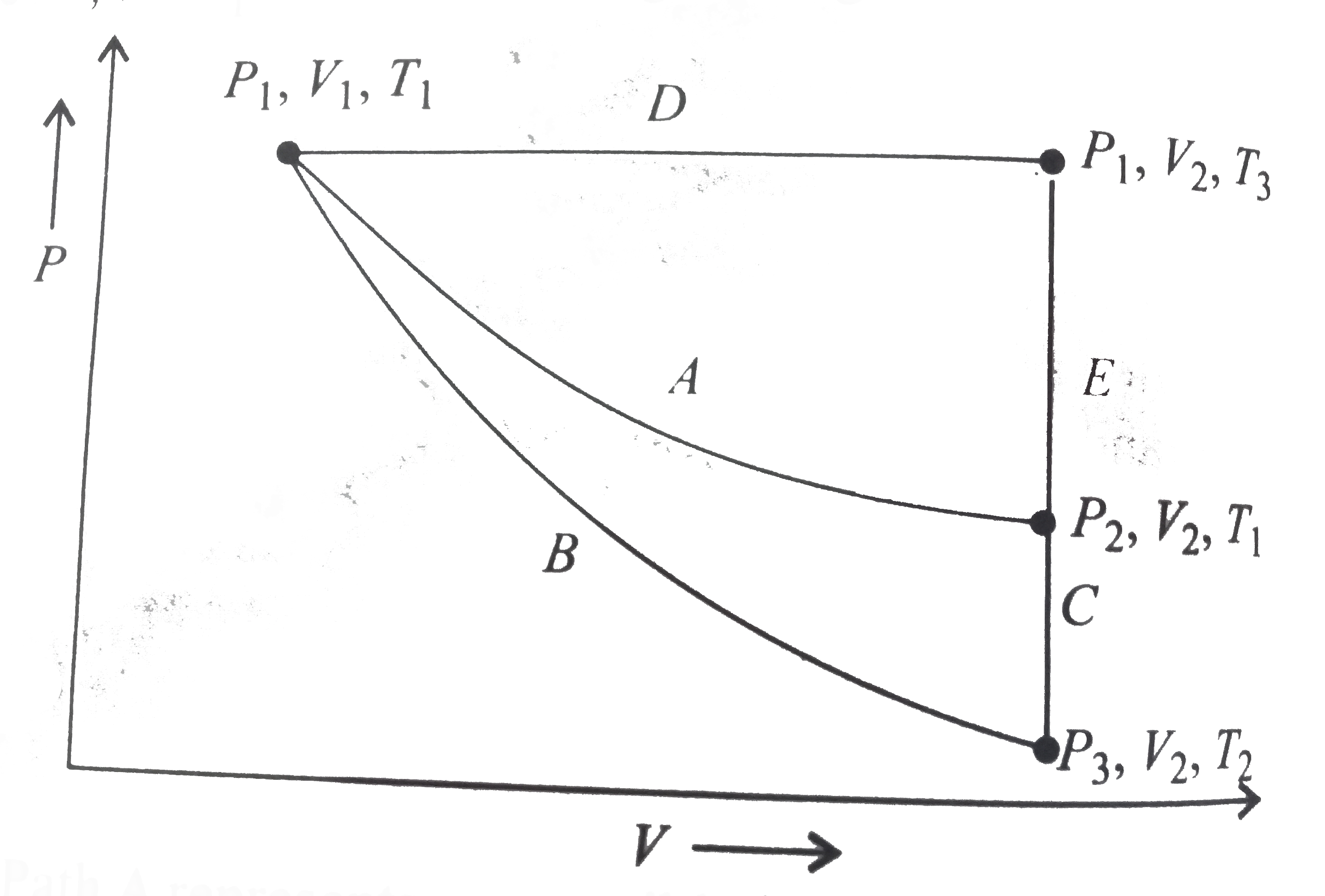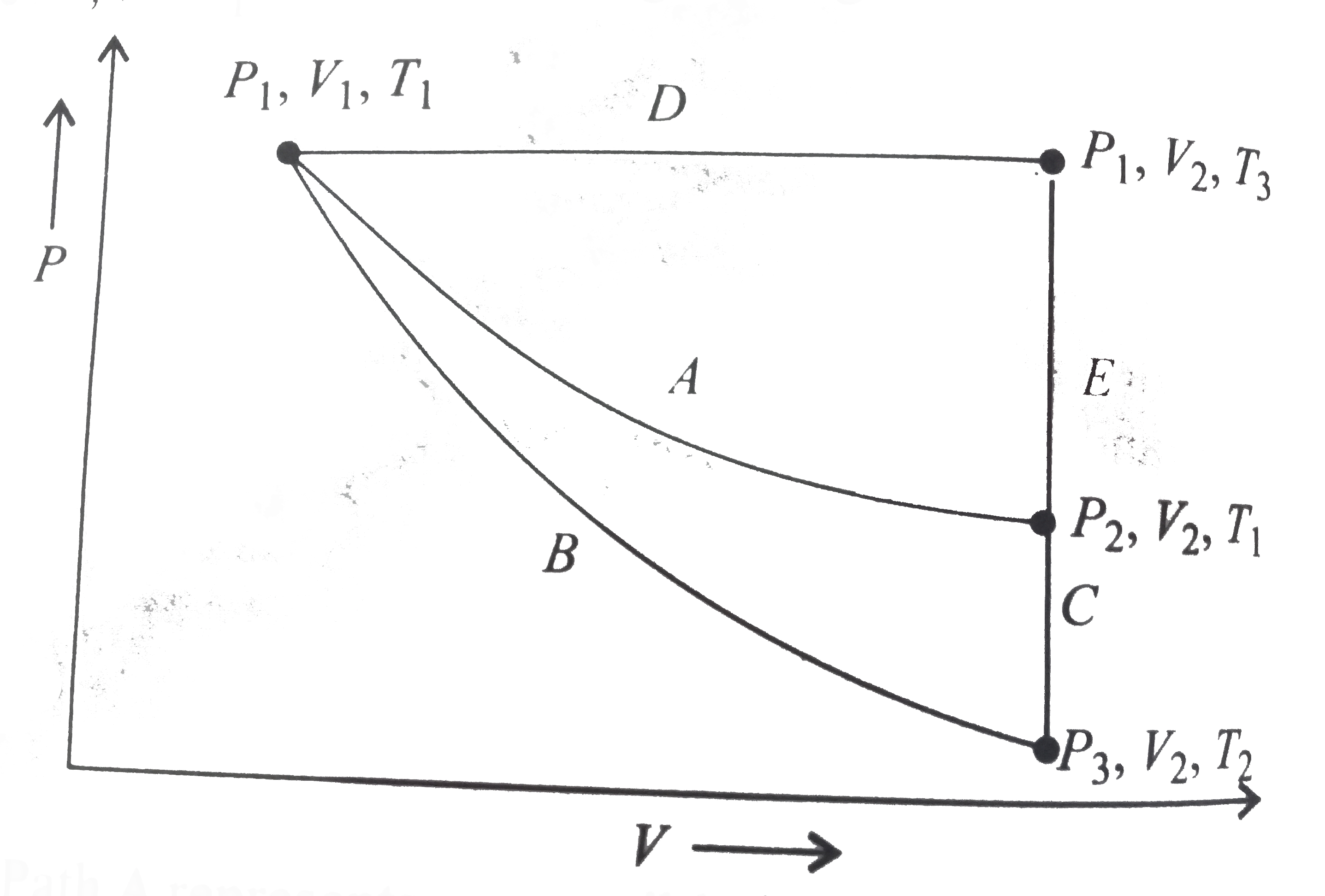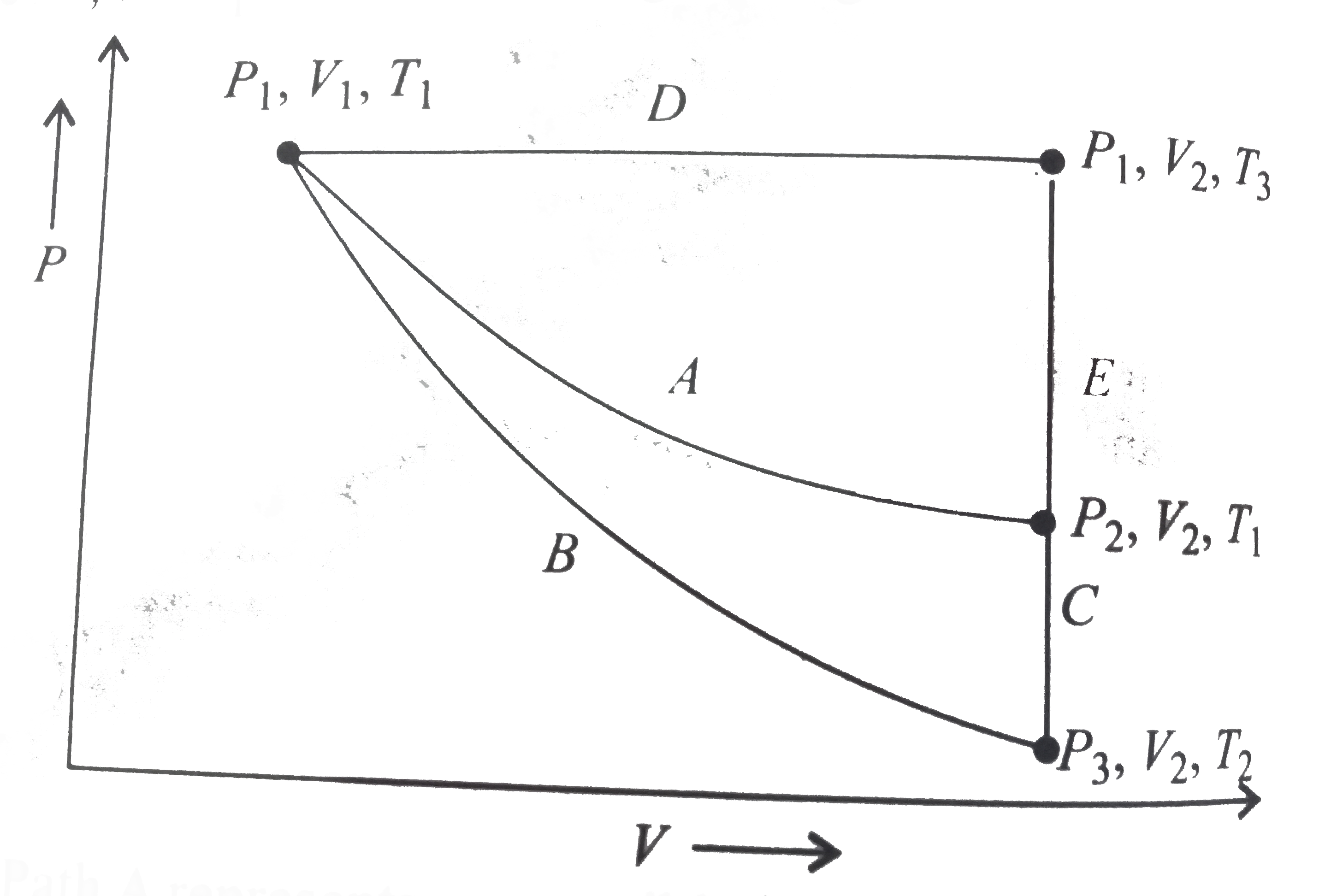Which of the following expression represent the work done in reversible adiabatic expansion of gas. (i) w=nRγ−1(T2−T1),
(ii) w=P2V2−P1V1γ−1
(iii) w=n(Cp+R)ΔT
(i) & (ii)
(ii) & (iii)
(i) & (ii)
(i),(ii) & (iii)
The correct Answer is:A
Topper's Solved these Questions
- THERMODYNAMICS AND THERMOCHEMISTRY BOOK - FIITJEECHAPTER - THERMODYNAMICS AND THERMOCHEMISTRY EXERCISE - ASSIGNMENT PROBLEMS (OBJECTIVE) LEVEL-I (REASONING TYPE QUESTIONS)
2 Videos
- THERMODYNAMICS AND THERMOCHEMISTRY BOOK - FIITJEECHAPTER - THERMODYNAMICS AND THERMOCHEMISTRY EXERCISE - ASSIGNMENT PROBLEMS (OBJECTIVE) LEVEL-II
25 Videos
- THERMODYNAMICS AND THERMOCHEMISTRY BOOK - FIITJEECHAPTER - THERMODYNAMICS AND THERMOCHEMISTRY EXERCISE - ASSIGNMENT PROBLEMS (SUBJECTIVE) LEVEL -2
15 Videos
- TEST PAPERSBOOK - FIITJEECHAPTER - TEST PAPERSEXERCISE - CHEMISTRY
747 Videos
- TRANSITION ELEMENTS & COORDINATION COMPOUNDSBOOK - FIITJEECHAPTER - TRANSITION ELEMENTS & COORDINATION COMPOUNDSEXERCISE - MATCHIG LIST TYPE QUESTIONS
1 Videos
Similar Questions
Column-IColumn-II(a)Reversible isothermal expansion of an ideal gas(p)w=2.330nRTlog(V2V1)(b)Reversible adiabatic compression of an ideal gas(q)PV'cosntant(c)Irrevesible adiabatic expansion of anideal gas(r)w=nR(γ−1)(T2−T1)(d)Irrevesiable isothermal compression of an ideal gas(s)ΔH=0
View SolutionColumn-IColumn-II(A)Reversible isothermal expansion of an ideal gas(p)w=−2.303nRTlog(V2V1)(B)Reversible adiabatic compression of an ideal gas(q)PVγ=constant(C)Irreversible adiabatic expansion of an ideal gas(r)w=nR(γ−1)(T2−T1)(D)Irreversible isothermal compression of an ideal gas(s)ΔH=0
View Solution
Knowledge Check
An ideal gasa undergoes through folowing cyclic procees.
1-2 : Reversible adialbatic comparession from
P1V1T1toP2V2T2
2-3 : Reversible isochoric heating from
P2V2T2 to P3V3T3
3-4 Reversible adialbatic expansion from
P3V3T3 to P4V4T4
4-1 Reversible isochoric cooling from
P4V4T4 to P1V1T1
Eefficiencyof the cycle is :A(T4−T1T3−T2)B1−T1T2C1−(V2V1)γ−1D1−∣∣∣Q4−1Q2−3∣∣∣For an ideal gas, an illustratio of three different paths A(B+C) and (D+E) from an initial state P1,V1,T1 to a final state P2,V2,T1 is shown in the given figure.

Path Arepresents a reversible isothermal expansion form P1,V1 to P2,V2, Path (B+C) represents a reversible adiabatic expansion (B) from P1,V1,T1→P3,V2,T2 followed by reversible heating the gas at constant volume (C)from P3,V2,T2 to P2,V2,T1. Path (D+E) represents a reversible expansion at constant pressure P1(D) from P1,V1,T1 to P1,V2,T3 followed by a reversible cooling at constant volume V2(E) from P1,V2,T3→P2,V2,T1.
What is qrev, for path (B+C)?AnRInV2V1B−nRInV2V1CzeroDnRT1InV2V1For an ideal gas, an illustratio of three different paths A(B+C) and (D+E) from an initial state P1,V1,T1 to a final state P2,V2,T1 is shown in the given figure.

Path Arepresents a reversible isothermal expansion form P1,V1 to P2,V2, Path (B+C) represents a reversible adiabatic expansion (B) from P1,V1,T1→P3,V2,T2 followed by reversible heating the gas at constant volume (C)from P3,V2,T2 to P2,V2,T1. Path (D+E) represents a reversible expansion at constant pressure P1(D) from P1,V1,T1 to P1,V2,T3 followed by a reversible cooling at constant volume V2(E) from P1,V2,T3→P2,V2,T1.
What is ΔS for path A?AnRInV2V1BP(V2−V1)C−P(V2−V1)DnR(V2−V1)
Write expression for the work done by 1 mole of the gas in each of the following cases :
(i) For irreversible expansion of the gas from volume V1 to V2.
(ii) For reversible isothermal expansion of the gas from volume V1 toV2.
(iii)For expansion of the gas into an evaluated vessel.
(iv) For reversible isothermal compression of the gas from pressure P1 to P2
(v)For adiabatic expansion resulting into change of temperature from T1 to T2.
View SolutionExamine the following plots and predict whether in (i) P1<P2andT1>T2 , in (ii) T1=T2<T3, in (iii) V1>V2,in(iv)P1>P2orP2>P1
_E01_267_Q01.png)
View SolutionExamine the following plots and predict whether in (i) P1<P2andT1>T2 , in (ii) T1=T2<T3, in (iii) V1>V2,in(iv)P1>P2orP2>P1
_E01_267_Q01.png)
View SolutionFor an ideal gas, an illustratio of three different paths A(B+C) and (D+E) from an initial state P1,V1,T1 to a final state P2,V2,T1 is shown in the given figure.

Path Arepresents a reversible isothermal expansion form P1,V1 to P2,V2, Path (B+C) represents a reversible adiabatic expansion (B) from P1,V1,T1→P3,V2,T2 followed by reversible heating the gas at constant volume (C)from P3,V2,T2 to P2,V2,T1. Path (D+E) represents a reversible expansion at constant pressure P1(D) from P1,V1,T1 to P1,V2,T3 followed by a reversible cooling at constant volume V2(E) from P1,V2,T3→P2,V2,T1.
What is qrev, for path (D+E)?
View SolutionFor an ideal gas, an illustratio of three different paths A(B+C) and (D+E) from an initial state P1,V1,T1 to a final state P2,V2,T1 is shown in the given figure.

Path Arepresents a reversible isothermal expansion form P1,V1 to P2,V2, Path (B+C) represents a reversible adiabatic expansion (B) from P1,V1,T1→P3,V2,T2 followed by reversible heating the gas at constant volume (C)from P3,V2,T2 to P2,V2,T1. Path (D+E) represents a reversible expansion at constant pressure P1(D) from P1,V1,T1 to P1,V2,T3 followed by a reversible cooling at constant volume V2(E) from P1,V2,T3→P2,V2,T1.
What is qrev, for path (A)?
View Solution
